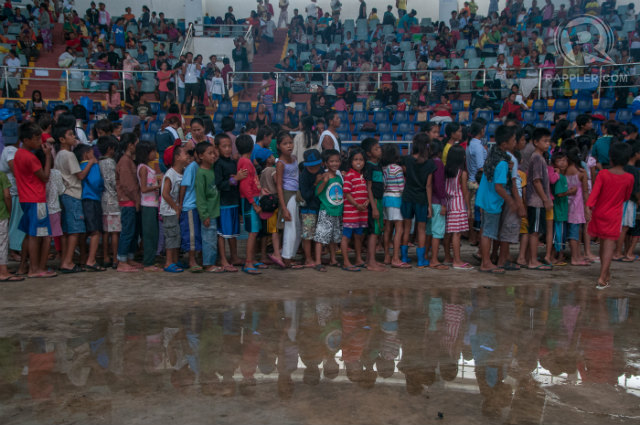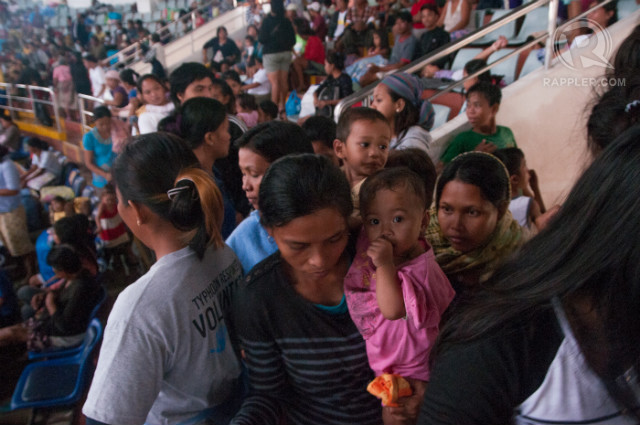SUMMARY
This is AI generated summarization, which may have errors. For context, always refer to the full article.

MANILA, Philippines – The Philippine government has not implemented the rehabilitation plans for towns and cities devastated by Super Typhoon Yolanda (Haiyan) in 2013, even as Typhoon Glenda (Rammasun) forced thousands of “traumatized” Yolanda survivors to evacuate again.
Rehabilitation Secretary Panfilo Lacson told Rappler on Tuesday, July 15, that his office is waiting for President Benigno Aquino III to approve the phased implementation of the local recovery and rehabilitation plans (LRRPs) of Tacloban City, Leyte, Samar, and Cebu.
Lacson said his agency, the Office of the Presidential Assistant for Rehabilitation and Recovery (OPARR), formally recommended this phased implementation to Aquino on July 1.
For Eastern Samar and Iloilo, his office was set to submit its recommendations on Wednesday, July 16, Lacson said.
The recommendations for the other Yolanda-affected LGUs – Aklan, Antique, Biliran, Capiz, Negros Occidental, Balud, Masbate, and Dinagat – will be submitted next week “after their presentation for vetting by the Cabinet clusters,” Lacson said.
He said the phased implementation “is expected to start in full swing upon approval by the President.”
No ‘master plan’ either
Lacson added that the OPARR will submit a master rehabilitation plan for Yolanda-affected areas – basically a compilation of the LGU rehabilitation plans – before the end of July.
He said the master plan “will be submitted only as a matter of course.”
“I cleared with the President earlier if we can do a phased implementation in order to fast-track the rehabilitation efforts – which he has approved in principle, hence the piecemeal or phased implementation of properly vetted LRRPs,” he said.
If he “didn’t resort to that approach,” Lacson said, all 171 LGUs affected by Yolanda “will be waiting for each other, which would delay the whole effort.”
“It would have served as an unnecessary disincentive to self-initiated and proactive LGU executives,” he said.

Lacson has explained his office adopts a “bottom-up” approach to rehabilitation.
This means, for one, doing rehabilitation on a per-province basis, instead of doing it all at once on a national scale. A former senator and police chief, Lacson said he wants a “bottom-up” process to avoid too much bureaucracy. (READ: 6 months after Yolanda: ‘We are failing’)
In the meantime, waiting for the government’s plans, Yolanda survivors suffered the brunt of Glenda as the northern part of Leyte, and the rest of Samar and Eastern Samar – all Yolanda-affected areas – had been placed under storm warning signals.
‘Don’t return to tents,’ but…
Typhoon Glenda, in fact, forced at least 7,318 residents from Yolanda-hit areas to evacuate, according to government data Wednesday, July 16.
The evacuees from the Yolanda-affected areas made up around 2% of the 338,413 who fled to evacuation centers across the country, based on initial estimates by the DSWD.
Humanitarian group Oxfam said Glenda caused panic among the “already traumatized” Yolanda survivors.
Barangay 89 council member Alejando Esperas, 43, told Oxfam: “Mahirap ang sitwasyon ng mga taong nakatira sa tents. ‘Pag mainit, para kang nasa oven; ‘pag umuulan, pinapasok ng tubig. At ngayong may bagyo uli, sobrang natatakot na sila. Na-trauma na sila dati, lalo na at nasa coastal area kami.”
(It’s very difficult for people living in tents. When it’s hot, it’s like an oven inside; when it rains, water enters the tents. And now that there’s a typhoon again, they are terrified. They were already traumatized before, especially considering that we are in the coastal area.)
Social Welfare Dinky Soliman, for her part, advised evacuees Wednesday not to return to their tents after Glenda. The problem, however, still is the lack of resettlement sites.
In April, estimates by the DSWD showed that up to 130,000 Yolanda survivors still lived in tents. – Rappler.com
Add a comment
How does this make you feel?
There are no comments yet. Add your comment to start the conversation.